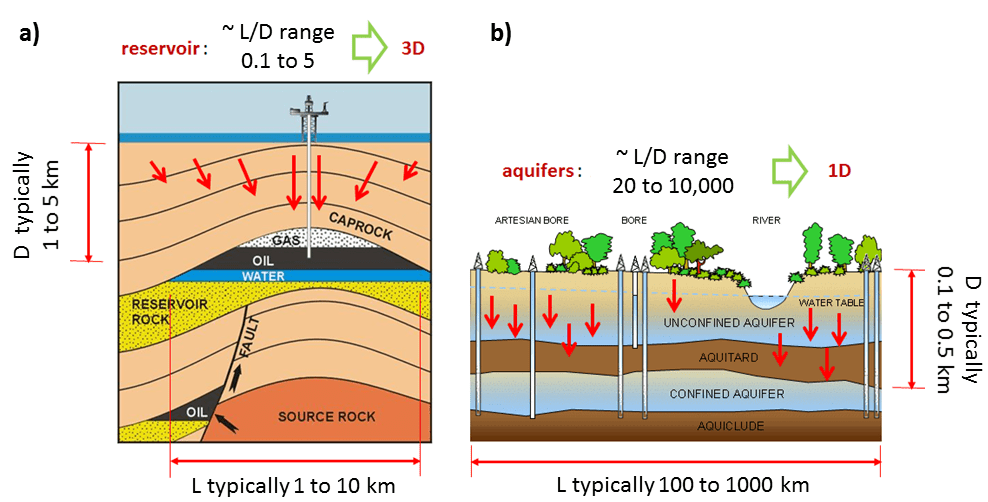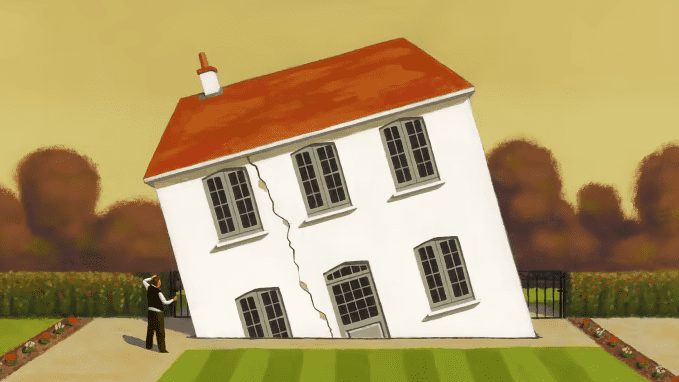Subsidence on the land is a geological phenomenon that occurs when the ground subsides or sinks due to an underlying geological process. It can occur in natural and artificial environments, with the latter often being more severe.
Subsidence on land can be caused by many factors, including tectonic movement, groundwater extraction, excessive weight on soils, or human activities such as drilling for oil or gas. When subsidence occurs, it can cause severe problems for any structure built upon it since foundations are weakened, resulting in cracking and other damage to buildings.

Tectonic activity is one of the most common causes of subsidence on the land. Subsidence occurs when plates move underneath the surface and cause a shift in the earth’s surface level. Examples of tectonic subsidence include earthquakes, volcanoes, and landslides, during which the ground becomes unstable and collapses into a lower position. Geologists use GPS measurements to monitor these changes and track where they happen.
Groundwater extraction is another common factor that affects subsidence on land. When too much water is pumped out from underground aquifers and reservoirs, this can increase pressure on underground rock layers, which leads to them becoming cracked and collapsing into a lower position – also known as ‘subside.’ This subsidence can be particularly destructive in cities because it can undermine the foundations of buildings that rely heavily on deep foundations, like skyscrapers and bridges.
Excessive weight on soils can also contribute to land subsidence. If large amounts of soil are placed onto land surfaces without proper compaction or drainage measures, this can lead to instability and collapse over time due to soils sinking under their weight. Without adequate foundation techniques like piling and trenching, this problem may only become apparent after construction is completed – making it costly to remedy afterward if not caught early enough in the planning processes.
Finally, human activities such as drilling for oil or gas can also lead to subsidence on lands because these processes involve putting extra pressure onto rock layers beneath the earth’s surface – causing instability and collapse into a lower level, again known as ‘subside.’ This problem has been increasingly highlighted throughout recent years as more companies have started mining for resources like shale gas using hydraulic fracturing (fracking). Fracking involves pumping large quantities of liquid into rocks at high pressures, which is thought to have caused rapidly increasing levels of ground deformation across numerous locations around the world – leading to fears that further collapses could continue unless better industry practices are implemented soonest possible.
How does subsidence affect property value?
Usually, subsidence can decrease property value by 20%-25%. Subsidence can produce great fear in homeowners and buyers. Land subsidence can lead to significant economic losses, such as cracks and structural damage.

Subsidence, or the sinking of land, is a severe problem that can affect property values. Several factors, including changes in the water table, underground mining activities, and the movement of natural geological structures, can cause subsidence. Property owners face risks to their investments when subsidence occurs due to the damage it can cause to buildings and infrastructure. Additionally, it can significantly reduce the value of affected properties due to the need for costly repairs and renovations.
Changes in water levels cause the most common type of subsidence. As water from rivers or streams is pumped out from beneath the surface, groundwater levels decrease, which causes soils around foundations to shrink and settle downward. This process creates voids beneath foundations that cause them to collapse into those spaces resulting in damaged walls, floors, roofs, and other structural elements of buildings. The severity of this damage depends on how quickly subsidence happened and the geographic features surrounding the affected area. In some cases, subsidence can also be caused by long-term weathering processes such as erosion which gradually breaks down rock formations over time, causing them to sink in some spots while rising in others.
Construction techniques play an essential role in minimizing risks posed by subsidence problems. For example, houses built on solid footing are less likely to suffer significant damages during periods of ground movement than those constructed with shallow foundations sitting directly on top of soil layers. Unfortunately, this isn’t always enough, and many property owners still encounter major repair bills after subsidence problems have damaged their homes.
In addition to repair costs associated with physical damages caused by subsidence, property values are often dramatically reduced when such problems occur due to potential buyers being concerned about possible future issues related to ground movement. This is especially true for areas close to bodies of water where issues with shifts in groundwater levels are more likely as people perceive these properties as being more prone to further subsidence events compared with other parts of town where these risks aren’t present or minimized due to different types of construction techniques used there.
To learn more about How to Calculate Land Value, you need to analyze our articles :
- Does Rezoning Increase Property Value?
- Does Clearing Land Increase Property Value?
- Does a Barn Increase Property Value?
- Do Fences Raise the Property Value?
- How much does a shed add to property value?
- How Much Does an ADU Increase Property Value?
- How Much Does a Guest House Increase Property Value?
- Does a New Roof Increase Property Value?
- How Does Subsidence Affect Property Value?
- How Much do Power Lines Decrease Property Value?
Therefore, it’s important for homeowners living in high-risk areas for subsidence problems like those near rivers and streams to consider extra measures for protecting their investments against potential damages associated with ground movements, such as installing deeper foundations or investing in more robust building materials before putting their properties up for sale if they hope to get maximum value out of them without having buyers worry too much about future problems associated with shifting land masses beneath their feet.
